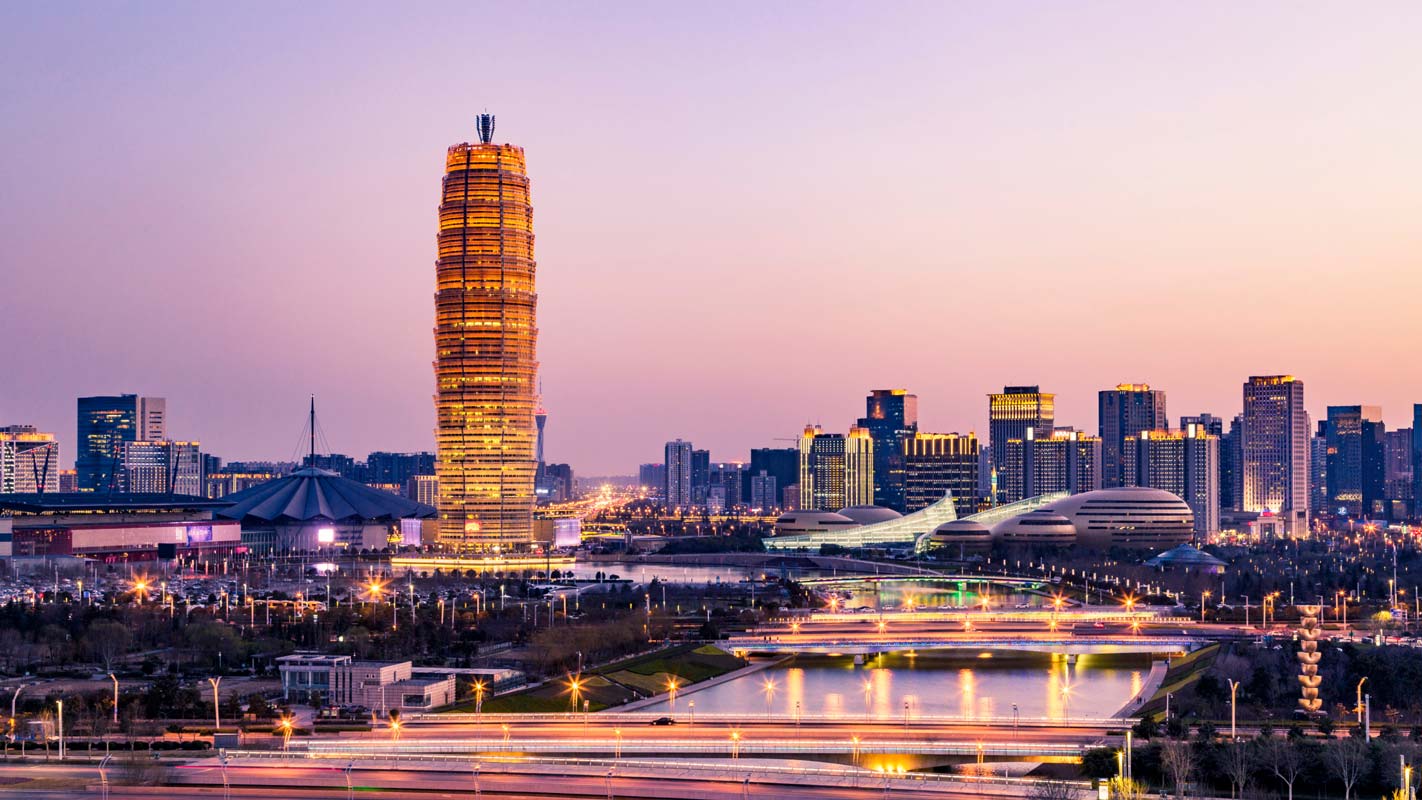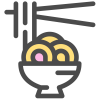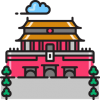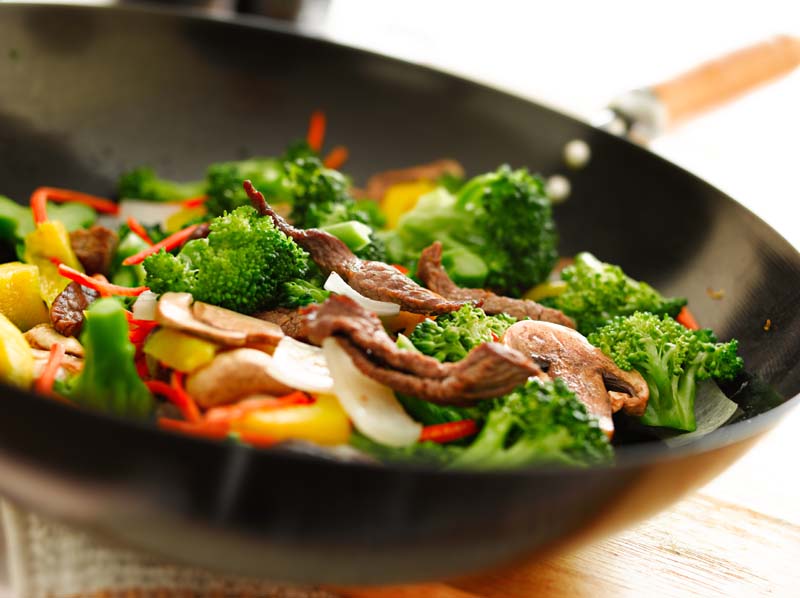
With its long history, Henan Province is a cradle of ancient Chinese culture. This has resulted in an abundance of historical sites and a rich culture, one of which is Yu (short for Henan Province) Cuisine. As the capital of Henan Province, Zhengzhou undoubtedly takes Yu Cuisine as its main menu.
Luoyang Water Banquet
The beautiful soup is called Luoyang Water Banquet. The Peony flower-shaped egg slices on top symbolize Luoyang’s most beloved flower. It is a popular Henan-style dish that originated from the Tang Dynasty and is often served to important guests who visit the city. A total of 24 dishes are served at the Water Banquet, with 8 cold and 16 hot dishes, each having its unique flavor and ingredients. The soup may include meat and vegetable dishes, cold and hot, with different tastes–some being sweet, salty, sour, or spicy. The soup we had was a sour vinegary broth with cooked shredded radish inside, with a texture similar to bird’s nest.
Chinese Wild Yams
Chinese wild yam has tons of health benefits since it’s good for the kidney and spleen. It also helps in lowering blood sugar and promotes longevity. It is cooked in a variety of ways–may it be as a drink, a soup, steamed, fried, or made into a delicious snack.
Carp on Noodles
Carp on Noodles is a special local food in Zhengzhou created in 1930 by a famous chef in Kaifeng. The dish is a classic twist to your favorite sweet and sour fish by adding a very thin layer of fried noodles on top.
Kaifeng Steamed Stuffed Buns
Similar to my favorite xiao long bao, the Kaifeng version has thicker dough. It is an imperial food served during the Northern Song Dynasty made from ground meat with its natural juices steamed inside its beautifully shaped dough.
Jiao Hua Ji
In Yuntaishan Mountain, we tried specialty dishes cooked by the local farmers and villagers. One, in particular, intrigued me–a chicken dish called Jiao Hua Ji. t uses an old traditional cooking method developed by farmers who were too poor to even have their own cooking utensils. The native chicken is hunted in the forest then wrapped around a layer of dirt and mud while being roasted.
Almond Tea Soup
The almond tea soup is a favorite local dish. Though unique to our palette, the soup has a watery, sweet almond taste. They say the soup keeps the skin supple and glowing. It is made from lotus foot starch, almond peanuts, sesame, and rice for a creamier texture. My local friend swears by this dish. I’m guessing it is an acquired taste.
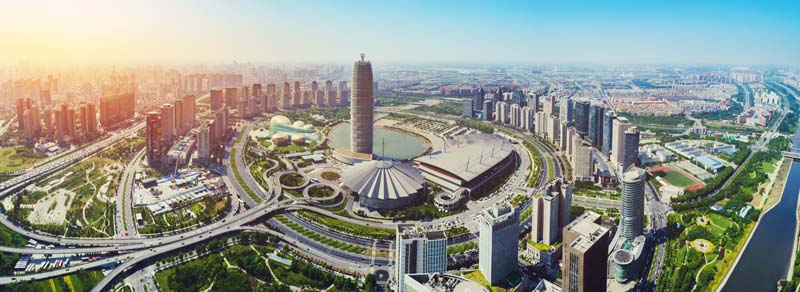
Zhengzhou, the capital city of Henan Province, is located in the middle of China. The famous Shaolin Temple which is near this city is the cradle of the Chinese martial arts that provided the inspiration for Kung Fu movies.
Shaolin Temple
Shaolin Temple is reputed to be ‘the Number One Temple under Heaven’. Shaolin Temple history can date back to Northern Wei Dynasty (386 – 534), and it played an important role on the development of the Buddhism in China. Included on UNESCO’s World Cultural & Natural Heritage List in 2010, it is the cradle of the Chinese Zen Buddhism and the Shaolin Martial Arts such as Shaolin Cudgel. One can see wild flowers and pines on the mountain. With birds singing and a brook spattering, a beautiful scene full of life and vitality is revealed to the visitors.
Shang Dynasty Ruins
If you’re interested in Ancient Chinese history, the Shang Dynasty Ruins are a must-see. Reachable by bus from the city center, they are preserved sections of an ancient wall from 3500 years ago, when the Shang Dynasty was in power of China. The colossal size of the walls located in downtown Zhengzhou are marveled by many of its visitors, and are a fantastic spot to spend a few hours while visiting the city.
Zhengzhou Confucian Temple
Located near the city center, Zhengzhou Confucian Temple is housed in a beautiful building and reflects on the culture of worshipping Confucius and other sages. Visitors to the Confucian Temple come to admire the decoration of the Dacheng Hall, the Jade Emperor’s multicolor artwork on the building (which represents the Taoist deity and the stories of the Three Kingdoms), and the sacrificial ceremonies that are hosted at the temple every Spring and Autumn.

With a warm temperate continental climate, the annual average temperature of Zhengzhou is about 14.3°C (about 57.7°F). Zhengzhou weather is comfortable, with bright sunshine and a clear distinction between the four seasons. The hottest month is July with an average temperature of about 27.3°C (about 81.1°F), while the coldest month is January, with an average temperature around minus 0.2°C (about 31.6 °F). Winter in Zhengzhou is cold though seldom snowy.
Spring
Spring in Zhengzhou is from March to May with mild and warm weather. During this period, this city is surrounded by sea of flowers of peonies, tulips, peaches, etc. It’s great time to walk around to enjoy this colorful days with some warm cloth to avoid the weather change.
Summer
Summer is always hot in Zhengzhou from June to August with average temperature of 30 °C in daytime and 19°C in night. Recommend to wear shirts, skirts, sunscreen cream and prepare some long sleeve thin cloth for night walking.
Autumn
Autumn is the most welcomed season in Zhengzhou, whether for traveling or staying. From Sept. to Nov. you can visit the Shaolin Temple to learn some Kung fu, climb Mt. Song to get close to nature and more activities. And before you go, bring some light cloth and thin sweater would be ok and drink more water as this season is quite dry.
Winter
With 9 °C and -1 °C in day and night, winter in Zhengzhou is cold but less snow. Still you need to take some thick jacket, coat and wear gloves and hat. There are many skiing areas for recreation. Shaolin Temple is still the first destination in Winter, so don’t afraid your long journey will in vain.

Zhengzhou International Airport
Location: Xinzheng International Airport lies on the boarder of Xuedian Town and of Zhengzhou City. As an important trunk line airport and a hub of air traffic in China, there are currently 17 airlines operating 82 air routes to 52 domestic and international cities and areas in it, including Hong Kong, Macau, Japan and Thailand. There are three levels in the terminal building, the first level is a parking lot, the Domestic and International Arrival Hall are on the second level and the Domestic and International Departure Hall are on the third level.
Zhengzhou subway
Currently, three Zhengzhou metro lines are in service: line 1 runs between Henan University of Technology and New Campus of Henan University. It passes the Main Railway Station and East Railway Station. Line 2 connects Liuzhuang and Nansihuan and passes 16 stations. Chengjiao Line links Nansihuan and Xinzheng International Airport. In addition, the extension line of line 2, and line 5 are under construction. As planned, 21 metro lines will operate in the city by 2050, linking the urban and suburban areas.
Zhengzhou train
Located at the crossing of Beijing-Guangzhou Railway Line and Lianyungang-Lanzhou Railway Line, Zhengzhou is one of the most important railway hinges in China to be regarded as the heart of China Rail System. There are five railway stations in the city: Zhengzhou Station, East Station, West Station and South Station (under construction) are high-speed ones and the former two are for both passenger and cargo transport; North Station is for freight only.
Zhengzhou taxi
Almost 11,000 taxis are equipped in the city. Passengers can easily catch a taxi anywhere including the airport and railway stations. The flag-down rate is CNY8 for the first 2km (1.2mi) in the daytime and CNY10 between 22:00 to 06:00 the next day. Drivers usually charge by meter. But if you would like to go to a nearby city, they may ask for flat rate or you can have a negotiated rate.
Long-distance bus
As one of the seven highway transport hubs in China, Zhengzhou has very convenient long-distance bus facilities. There are around 10 long-distance bus stations for passengers’ convenience. One can have an easy access to a city in Henan Province or an inter-province destination like Beijing, Shanghai and Xi’an.
Zhengzhou city bus
The city has 238 bus routes and almost 5,300 buses are used to serve the locals and all travelers. Regular daytime buses, overnight buses and tourist buses are available to meet the different needs.


